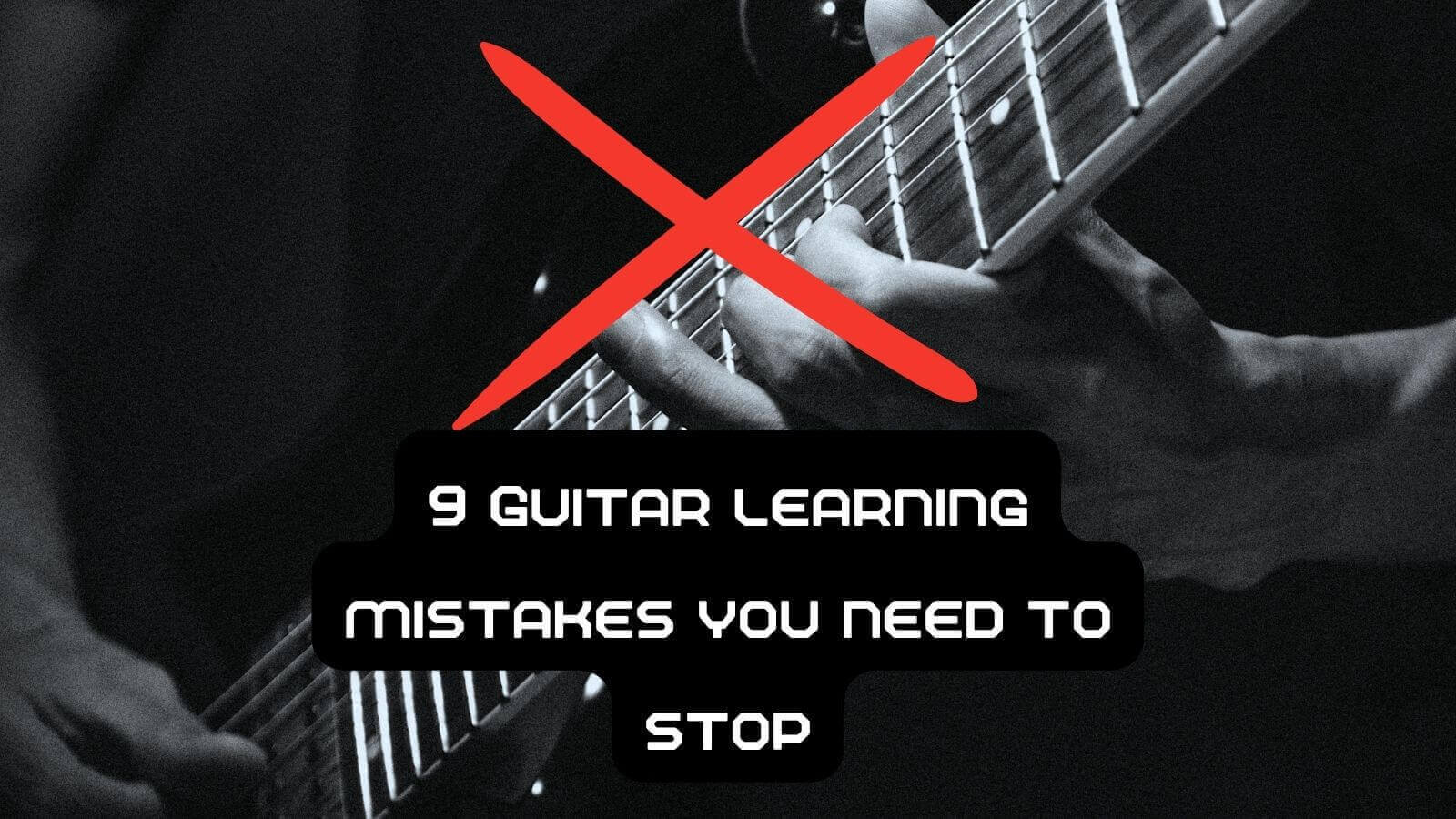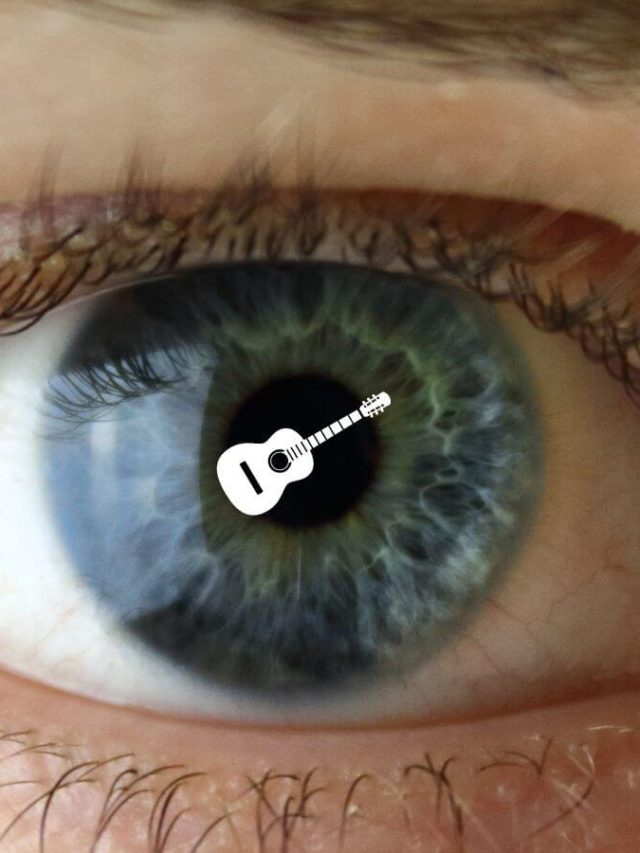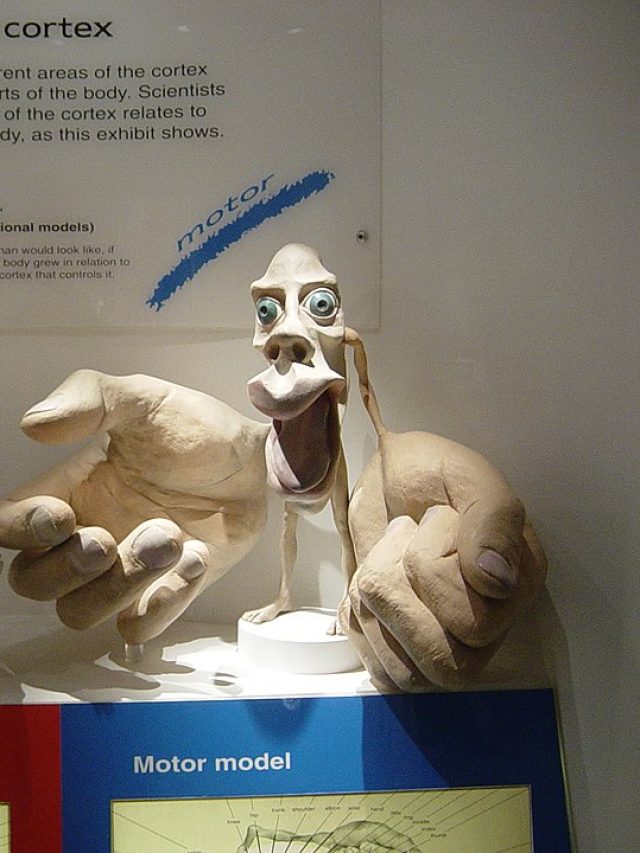Stop these mistakes and you’ll finally unlock real progress.
The most common advice on how to improve guitar playing is “practice more”. So why are so many guitarists who are practicing not improving? Why are they stuck? The answer is they are learning in a way not compatible with the brain. This is a small slice of what I call the brain-based guitar learning method.
Practicing too much doesn’t help. So what are the most common mistakes guitarists make while practicing? And what can you do instead?
Chapters
Mistake 1: Practicing too many hours every day non-stop
The brain needs breaks to consolidate learning. These breaks are defined as gaps between 2 focused practice sessions. When you start a practice session and rehearse it, that learning has to translate into stable neural firing patterns. Neurons will govern that finger movement. When you are learning, those neurons are firing chaotically and then they stabilize through a bunch of processes. One such process is building a fatty layer on top of the “wire” part of a neuron called the axon. When the fatty deposit called Myelin covers the neuron, it communicates more efficiently to other neurons. Many such neurons then represent what you’ve learned. For this process to occur, the brain needs breaks and time. In fact, if you learn something and just keep playing it for 8 hours, 2 bad things will happen: Your muscles will get fatigued (they will fail to accurately guide movement, like twitching and flying fingers), and your brain will never know what exactly is the “learning state”. It’ll think that the neurons have to keep processing what you are doing instead of trying to stabilize them.
Most of this happens when you do something unrelated and non-interfering. For example, don’t start typing at 100BPM right after practicing scales up and down. Those movements could interfere with the neurons stabilizing mechanisms because the brain still thinks neurons associated with fingers are learning. You can carry on with your day and return to practice when sufficient time passes. Now, how much is enough? Perhaps 1 to 2 hours. Research shows it takes anywhere from a few minutes to days for neurons to stabilize into a memory pattern.
Sleep is another important way to take a break. During sleep, particularly deep sleep, the brain re-organizes learning and consolidates neural patterns. This means the fragile neural firing that occurred during practice becomes a stable firing pattern via deep sleep. So if you have disturbed sleep, you are losing out on the brain’s natural learning capacity.
Breaks are also important because of stress. When we learn something new, the brain is consolidating a new memory. When we remember it, the brain reactivates that memory and puts it into a fragile, malleable state. Then, it has to undergo reconsolidation which re-stabalizes the memory again. When you update your past learning, you are essentially breaking a consolidated memory, adding new learning to it, and then reconsolidating it. What stress does is that it helps consolidation of new memories but disrupts reconsolidation.
So stressful repetition of what you want to master isn’t a good idea, you are hurting your chops. Learn something new when you are stressed.
Mistake 2: Not taking up challenges
The brain learns when it is challenged. The challenge, however, has to be just beyond your current capacity. But here’s the thing, you can set difficult challenges and then break them down into achievable chunks.
A theory in psychology called “optimal incongruity[1]” says we remain motivated and curious to improve when the challenge we choose is just beyond our current skill level. This level of challenge also puts you in the flow state and creates just enough physical and mental arousal to continue practicing.
So your guitar practice must include challenges.
Mistake 3: Thinking you need more practice when you are stuck
Sometimes when you are stuck, you don’t need more practice. You need distance and let the brain continue doing its automatic learning processes via sleep and rest. When you are stuck, move on to a different lick or exercise.
When the brain spaces out, it helps the brain solidify its neural connections via memory consolidation[2]. Ensure that you do not interfere with that consolidation process. One mechanism for this process is called “neural replay” where the brain rehearses the unstable (labile) neural connections and repeatedly activates them to strengthen them automatically. This happens during your non-REM sleep and idle, quiet time.
So when you are stuck, move on from that bit and practice something else and let the brain continue optimizing on its own. It may take a few nights’ sleep for you to see improvements.
Mistake 4: Practicing scales and exercises to perfection with no musical context
A lot of beginners practice scales up and down and what this does is it builds 2 core memory templates (called schemas) for the expected sounds in a scale and muscle memory for finger movement. But to be a musician, you need another schema, a musical context schema which helps you predict good musical sequences. This develops through examples of musical phrases mapped to a scale. Your scale runs and musical sequences must go hand-in-hand.
So when you practice scales, also practice a few musical sequences built with those scale shapes to develop all 3 schemas: Expected sounds, muscle memory, and musical prediction.
Mistake 5: Practicing techniques as techniques and not methods to make music
Every time you learn a technique, apply it in a musical context. The brain likes to know the purpose of what you learn because it doesn’t work like a computer. A file is a file no matter what. But the brain changes how it reads a file depending on why it was stored, where it was stored, how it is accessed, and when it is needed.
Essentially, we “tag” learning with purpose and importance to use it in the future. That tag amplifies learning. Plus, across educational psychology research, it is common knowledge that applied learning does a better job at real-life learning than theoretical learning. So learn your techniques as a way to make music and make music when you learn them. Don’t just learn them as a set of instructions.
Suppose you learn a technique through music. Let’s say you learn finger-picking through Metallica’s nothing else matters and tapping through Eddie Van Halen’s eruption. Once you learn, make something new by modifying those sequences so you apply your technique in a new musical context.
Mistake 6: Practice one thing and ignore everything else
The best form of motor learning occurs with variation, not with a single stimulus. Research shows variation in what you practice and how you practice builds a “generalized” skill and approach to performing your skill.
The classic example comes from basketball – if you practice throwing a basket from one spot, you’ll probably nail it. But if you practice it from a few different positions, you’ll start nailing it from unknown positions too. Variation allows the brain to extrapolate. The same applies to music and guitar.
You have to learn many, many examples for your brain to develop a generalized guitar-playing skill. Sticking to one thing will harm your playing.
Mistake 7: Ignore improvisation
Imagine you have a toolkit of many different techniques and ideas. Improvisation is using any or all of them in a musical context that makes sense to you as a musician. Improvisation requires cognitive flexibility. Cognitive flexibility is one of our brain’s core executive functions that governs decisions and planning. It is the inbuilt switch to shift between ideas and plan while doing something else – the real multitasking switch in the brain. Improvisation requires you to switch attention between what you are playing, what you know, evaluate what makes sense after your current sequences and how to execute it on time. All of this requires the following:[3]
- Working memory: Working memory is our temporary store of memory where planning is done. You have to have your musical sounds, finger movement patterns, and possible future changes in your sequences in working memory.
- Trust: While improvising, you have to trust your accompanying musicians and yourself.
- Attention to detail: You must have attention, so your playing execution should be automatic to keep some spare attention. This attention should look at all your musical ideas and pinpoint what makes sense. The way to build this musical sense is practicing in a musical context, because the brain will automatically tell you what feels off or what doesn’t through a large “data set” of past musical experiences.
- Vast knowledge: You need many ideas in muscle memory and have enough familiarity with how people improvise. Creative improvsation often comes to combining and recombining ideas in sensible ways.
- Self-monitoring: Improvisation needs attention, so you should be able to continuously reflect on what you are playing. Having high muscle memory and the knowledge to analyze your musical sequences is very important.
- Reframing a problem: Reframing a problem in the guitar sense is to thinking of your problem in layers or sequences – are you extending the lead melody, do you want to change the chordal structures, do you want to change both, do you want to change the overall themes in your music? For each of these, your brain must find a starting or ending point to make that shift.
Mistake 8: Pay too much attention to what you are doing
Muscle memory is automatic. You must treat it like a habit, where you don’t need attention. While building your chops, you need to pay attention, but when you start acquiring the skill, you should stop focusing too much and let your fingers do the job. Try not to focus directly on your fingers.
Research shows that experts develop great intuition about doing their job but end up making mistakes when they are asked to focus deeply. This is because their focus interferes with an already-automatic set of skills. Attention can also be slower than automatic hand movements.
An interesting finding[4] is that humans shift attention to automatic body movements when there is an error and chimpanzees shift attention to automatic body movements when there is an error that actually interferes with their goal. So whether you are a human or a chimp, you can trust your attention to take care of mistakes and learn through feedback even when you stop paying attention.
Mistake 9: Nail something and then forget about it
Memory decays over time. So once you’ve perfected something, you have to return to it once in a while to ensure that memory is still strong. Let’s say you learn a song. After you stop practicing it for a few weeks or months, you’ll see your efficiency drop. This is just how the brain works. If the memory is not utilized and reinforced, it’ll weaken. And at some point, you’ll fully forget.
So after you nail something, practice it once in a while.










